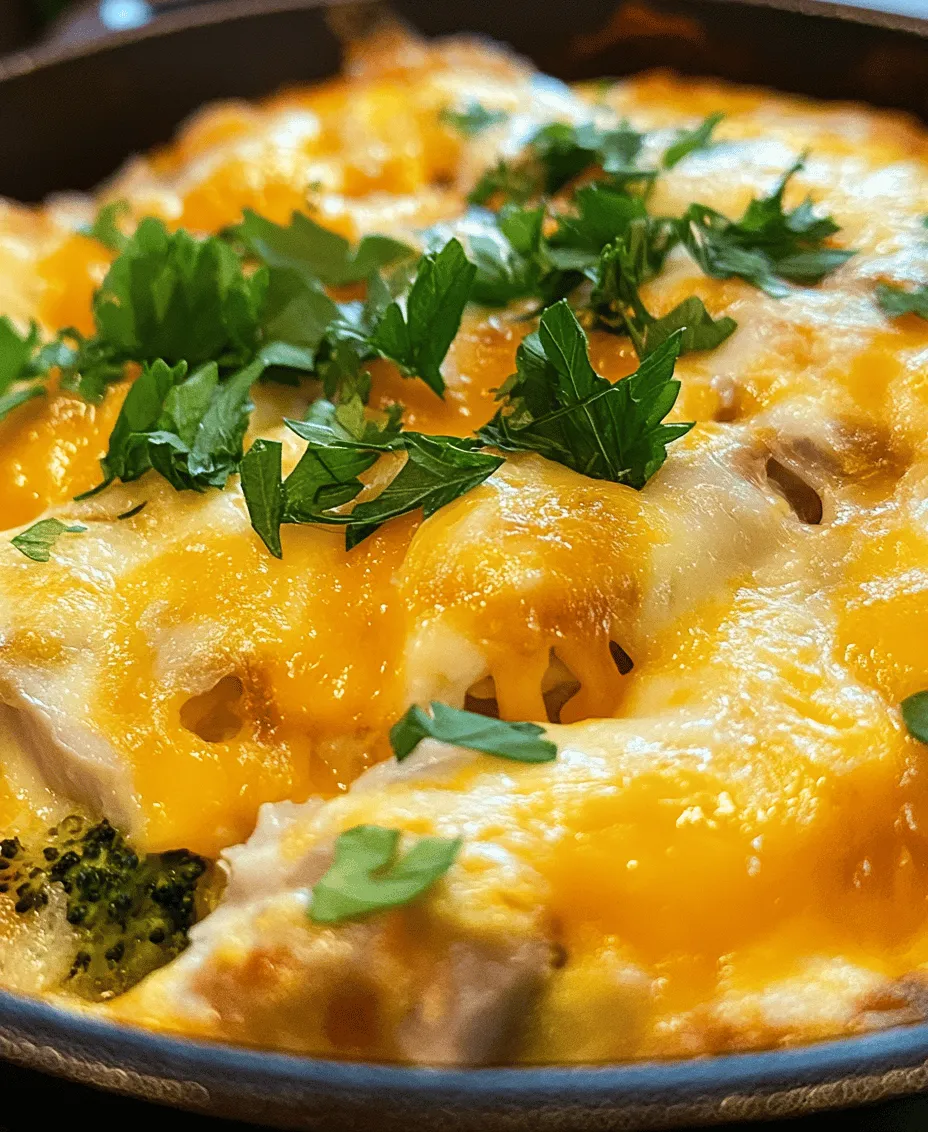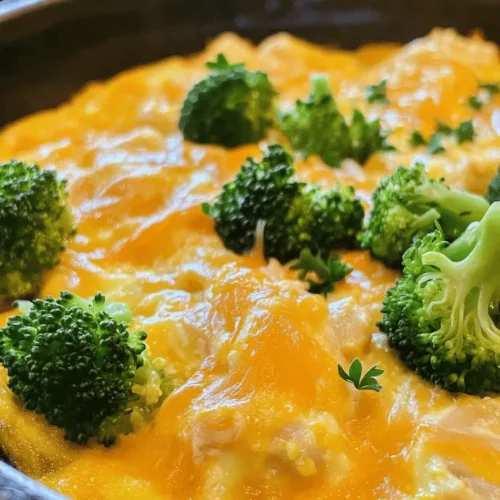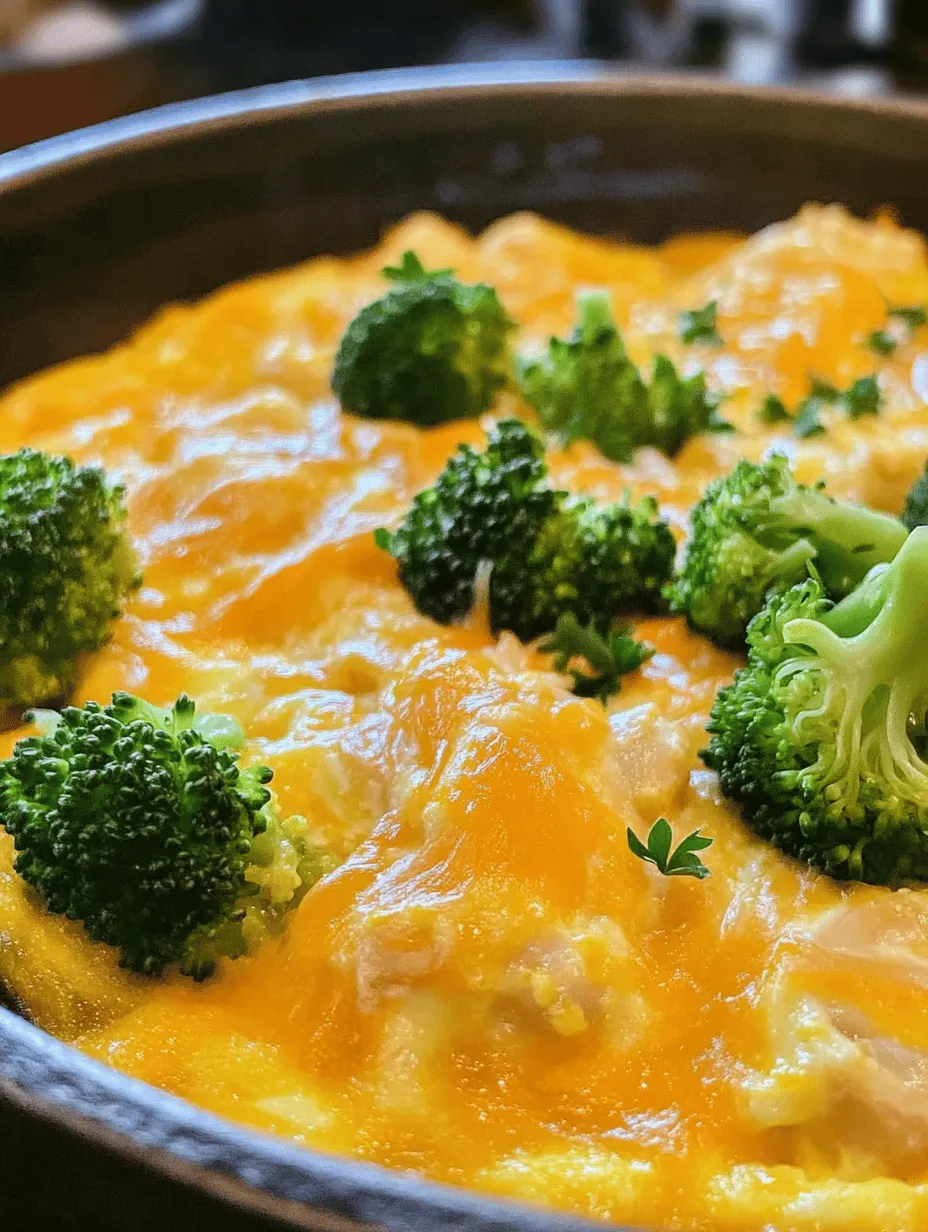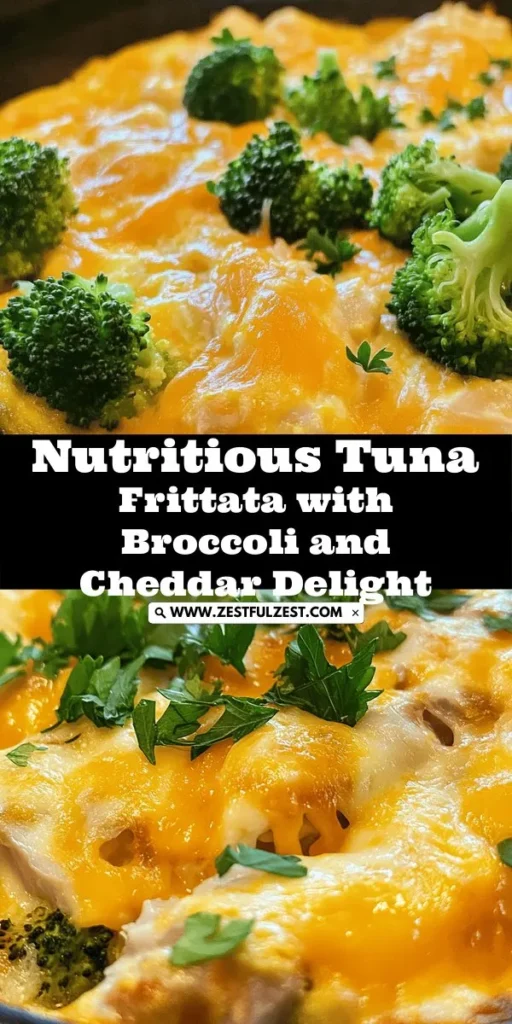The Tantalizing Tuna Frittata with Broccoli & Cheddar is more than just a meal; it’s a delightful fusion of flavors and nutrients, perfect for any time of day. This dish combines the rich taste of tuna with the wholesome goodness of broccoli and the creamy texture of cheddar cheese, creating a satisfying and nutritious option for breakfast, lunch, or dinner. In this article, we will delve into the origins of frittata, explore the health benefits of its key ingredients, and provide a comprehensive guide to preparing this delicious recipe, ensuring that you can recreate it in your kitchen with ease.
Understanding Frittata: A Culinary Classic
Exploring the History of Frittata
The frittata is a classic Italian dish that has become beloved worldwide for its versatility and ease of preparation. The term “frittata” derives from the Italian word “friggere,” which means “to fry.” Traditionally, a frittata is made by mixing beaten eggs with various ingredients and cooking them slowly in a skillet until set, resulting in a beautiful and hearty dish.
Historically, frittatas were created as a way to use up leftovers, similar to the Spanish tortilla or a quiche. They gained popularity in Italy during the Renaissance, where they were served as a filling meal that could easily incorporate whatever ingredients were at hand. This adaptability is part of what makes the frittata so appealing — you can customize it to suit your taste preferences or dietary restrictions.
Differences Between Frittata, Omelets, and Quiches
While frittatas, omelets, and quiches all share a foundation of eggs, they differ significantly in preparation and texture. An omelet is typically cooked quickly on the stovetop, folded over, and filled with various ingredients, resulting in a soft and creamy center. In contrast, quiches feature a crust (often made from pastry) and are baked in the oven, leading to a denser and richer dish.
Frittatas stand apart as they are cooked slowly and can be finished in the oven, allowing for a more even cooking process. The mixture of eggs and ingredients is stirred together, creating a cohesive dish that can be sliced into wedges, making it perfect for serving at brunch gatherings or as a meal prep option for busy weeks.
The Versatility of Frittata
One of the most significant advantages of frittatas is their versatility. You can easily adapt the ingredients based on what you have on hand, ensuring that you can always whip up a delicious meal. Popular additions often include vegetables like bell peppers, spinach, and onions, as well as proteins such as bacon, sausage, or, as in this recipe, tuna.
Frittatas also work well for various dietary preferences. Whether you’re vegetarian, gluten-free, or looking for a low-carb option, you can swap out ingredients to create a dish that meets your needs. Serve it with a side salad for a refreshing lunch or pair it with whole-grain toast for a hearty breakfast.
Nutritional Benefits of Tuna, Broccoli, and Cheddar
The Health Benefits of Tuna
Tuna is a powerhouse of nutrition, making it an excellent addition to any meal. One of the most significant benefits of tuna is its high protein content, which helps support muscle growth and repair. Additionally, tuna is rich in omega-3 fatty acids, known for their heart-healthy properties. Omega-3s can help reduce inflammation, lower blood pressure, and improve cholesterol levels, contributing to overall cardiovascular health.
Moreover, consuming tuna regularly can benefit brain function. The omega-3 fatty acids found in tuna are essential for maintaining cognitive health, potentially reducing the risk of age-related cognitive decline. This makes tuna a smart choice not just for athletes but for anyone looking to support their overall health.
Broccoli: A Nutrient Powerhouse
Broccoli is often dubbed a superfood due to its impressive nutritional profile. This green vegetable is packed with vitamins, including vitamin C, vitamin K, and several B vitamins, which play crucial roles in maintaining bodily functions. Broccoli also contains an abundance of minerals such as potassium, calcium, and iron.
One of the standout features of broccoli is its antioxidant properties. These compounds help combat oxidative stress in the body, which can lead to chronic diseases. Additionally, the fiber content in broccoli supports digestive health, promoting regular bowel movements and aiding in weight management.
Cheddar Cheese: Balancing Flavor and Nutrition
Cheddar cheese adds a creamy texture and rich flavor to the frittata while also contributing nutritional benefits. Cheese is a good source of calcium, which is essential for maintaining strong bones and teeth. It also contains protein, which aids in muscle repair and growth.
However, moderation is key when it comes to cheddar cheese. While it can be part of a balanced diet, it’s important to be mindful of portion sizes due to its calorie and fat content. Opting for a sharp cheddar can enhance flavor while allowing you to use less cheese overall.
Ingredients Breakdown for the Tantalizing Tuna Frittata
Essential Ingredients and Their Roles
To prepare the Tantalizing Tuna Frittata with Broccoli & Cheddar, you’ll need the following essential ingredients:
– Eggs: The base of the frittata, providing protein and structure.
– Canned Tuna: Adds protein and a savory flavor.
– Broccoli: Contributes vitamins, minerals, and fiber.
– Cheddar Cheese: Provides creaminess and enhances flavor.
– Onion: Adds aromatic depth and sweetness.
– Salt and Pepper: Essential seasonings for enhancing all the flavors.
Each of these ingredients plays a vital role in the overall taste and nutritional profile of the frittata. The eggs create a fluffy base, while the tuna and broccoli offer a satisfying texture. The cheddar cheese binds everything together, making each bite creamy and delicious.
Importance of Quality Ingredients in Enhancing Flavor
When it comes to preparing a frittata, the quality of your ingredients can significantly impact the final dish. Fresh, high-quality eggs will result in a richer flavor and better texture, while choosing sustainably sourced tuna can offer both better taste and ethical peace of mind. Similarly, using fresh broccoli instead of frozen will provide a vibrant color and crunch that elevates the dish.
Investing in quality ingredients not only enhances the flavor but also contributes to the overall nutritional value of your meal. By selecting fresh, organic produce and responsibly sourced proteins, you’re not only treating your taste buds but also nourishing your body.
Substitutions for Dietary Needs
If you have specific dietary needs or preferences, there are several substitutions you can make in the Tantalizing Tuna Frittata recipe. For those who are vegetarian, you can replace the tuna with sautéed mushrooms or cooked lentils. If you’re lactose intolerant or vegan, consider using a dairy-free cheese alternative and substituting eggs with a chickpea flour mixture or silken tofu blended to a smooth consistency.
For gluten-free diets, this frittata is naturally gluten-free, so you can enjoy it without concern. Additionally, you can experiment with different vegetables, such as bell peppers, zucchini, or spinach, to tailor the frittata to your taste and nutritional needs.
As we dive deeper into this recipe, we will guide you through each step, ensuring that you can create this Tantalizing Tuna Frittata with Broccoli & Cheddar with confidence and ease. Get ready to enjoy a deliciously satisfying and nutritious meal that will leave you and your loved ones coming back for more.

Alternative Proteins and Cheeses
When it comes to creating a delicious Tuna Frittata, the beauty lies in its versatility. If you’re looking to switch things up or accommodate dietary preferences, consider alternative proteins that can seamlessly substitute tuna while still delivering a satisfying meal. Options like cooked chicken, diced ham, or even crumbled turkey sausage can be excellent replacements. For a vegetarian option, consider using cooked lentils or chickpeas; they provide a hearty texture and a protein boost.
Similarly, if cheddar cheese isn’t your favorite or you want to explore different flavor profiles, you have several choices. Feta cheese brings a tangy kick, while mozzarella offers a milder taste and creamy texture. For a sharper profile, try aged gouda or a pepper jack for a touch of spice. Experimenting with different cheeses can elevate your frittata, giving it a unique flair tailored to your palate.
Vegan and Dairy-Free Options
For those adhering to a vegan or dairy-free lifestyle, you can still enjoy a frittata-like dish without sacrificing taste. Start with a base of silken tofu blended until smooth; this can serve as a fantastic egg substitute. Incorporate nutritional yeast for a cheesy flavor, and mix in your favorite vegetables, such as spinach, bell peppers, or mushrooms.
Alternatively, chickpea flour can be used to create a vegan frittata. Combine chickpea flour with water or plant-based milk until you achieve a pancake batter-like consistency. Fold in your vegetables and seasonings before cooking. This method provides a protein-packed, gluten-free option that is not only nutritious but also incredibly delicious.
Step-by-Step Guide to Preparing the Tantalizing Tuna Frittata
Prepping Your Ingredients
Before diving into the cooking process, it’s essential to prep your ingredients efficiently. Start by washing and chopping the broccoli into small florets, ensuring even cooking. Mince any additional vegetables you wish to add, such as onions or bell peppers. Draining and flaking the tuna should be done beforehand; this helps to infuse the frittata with its distinct flavor without the risk of excess moisture.
The importance of mise en place cannot be overstated. Having all ingredients measured, chopped, and ready to go will not only streamline your cooking process but also reduce stress in the kitchen. This preparation method ensures that you can focus entirely on the cooking techniques without scrambling for ingredients mid-recipe.
Detailed Instructions
1. Preheating the Oven: Begin by preheating your oven to 375°F (190°C). This temperature is ideal for cooking the frittata evenly without overcooking the edges or leaving the center undercooked.
2. Sautéing Techniques for Perfect Vegetables: In a large oven-safe skillet, heat a tablespoon of olive oil over medium heat. Add your chopped broccoli and any other vegetables you’ve chosen. Sauté for about 5-7 minutes or until they are tender and vibrant in color. This step not only enhances the flavor of the vegetables but also ensures they are cooked through once mixed with the eggs.
3. Whisking Eggs to the Right Consistency: In a separate bowl, crack 6 large eggs and whisk them vigorously until the yolks and whites are fully combined. Season with salt, pepper, and a dash of paprika for added flavor. The goal is to achieve a frothy consistency, which will incorporate air into the eggs, making your frittata light and fluffy.
Combining Ingredients Effectively
Once your vegetables are sautéed and your eggs are whisked, it’s time to combine everything. Add the flaked tuna and any cheese you’ve chosen to the skillet with the vegetables. Pour the egg mixture over the top, ensuring even distribution of flavors and textures. Gently stir with a spatula to combine, but be careful not to over-mix as you want to maintain the structure of the vegetables and tuna.
To prevent sticking in the skillet, make sure to use a well-seasoned cast-iron skillet or a non-stick pan. If you’re using a stainless-steel skillet, consider adding a little more oil to ensure the frittata doesn’t cling to the surface during cooking.
Cooking Techniques: Stovetop vs. Oven
Cooking your frittata can be done effectively using both stovetop and oven methods, each with its unique benefits. Starting on the stovetop allows for quicker cooking of the bottom layer, helping to set the frittata without burning. After a few minutes of cooking on the stovetop, transfer the skillet to the preheated oven to finish cooking through and achieve a beautifully golden top.
For those who prefer to avoid stovetop cooking altogether, you can simply bake the frittata in the oven for about 25-30 minutes, or until the edges are set and the center is slightly wobbly. The key is to keep an eye on it to prevent overcooking, which can result in a dry frittata.
Serving Suggestions and Pairing Ideas
Ideal Accompaniments for Your Frittata
The Tantalizing Tuna Frittata makes for a robust meal that can be served on its own, but pairing it with complementary side dishes elevates the dining experience. A simple green salad with a light vinaigrette can add freshness to the meal. Consider pairing it with roasted vegetables, which add a delightful crunch and additional nutrients.
For a heartier option, serve the frittata alongside whole-grain toast or avocado slices. The creaminess of avocado complements the frittata beautifully while providing a healthy fat source.
Beverage Pairings to Enhance the Meal
When it comes to beverages, consider serving a chilled glass of white wine, such as Sauvignon Blanc or a light Pinot Grigio, which pairs nicely with the flavors of tuna and cheese. Alternatively, for a non-alcoholic option, an iced herbal tea or sparkling water with a squeeze of lemon can refresh the palate and cleanse it between bites.
Presentation Tips for a Beautiful Serving
Presentation plays a crucial role in enhancing your meal’s overall appeal. To garnish your frittata, sprinkle freshly chopped herbs such as parsley or chives on top just before serving. This not only adds a pop of color but also infuses the dish with fresh flavors.
For plating, slice the frittata into wedges and arrange them on a serving platter. Include a small bowl of mixed greens drizzled with balsamic vinegar for a contrast in colors and textures. For an inviting presentation, consider using colorful plates or bowls that complement the frittata’s vibrant hues.
Conclusion
The Tantalizing Tuna Frittata with Broccoli & Cheddar is more than just a meal; it’s a versatile and nutritious dish that caters to a variety of dietary preferences. Whether you’re enjoying it for breakfast, lunch, or dinner, this frittata offers a delightful combination of flavors and textures that is sure to please.
By understanding the flexibility of the recipe and the nutritional benefits of the ingredients, you can confidently make this dish your own. With a step-by-step guide to preparation and creative serving suggestions, it’s time to bring this frittata into your kitchen and share it with family and friends. Embrace the joy of cooking and the pleasure of sharing delicious food that nourishes both the body and the soul.



